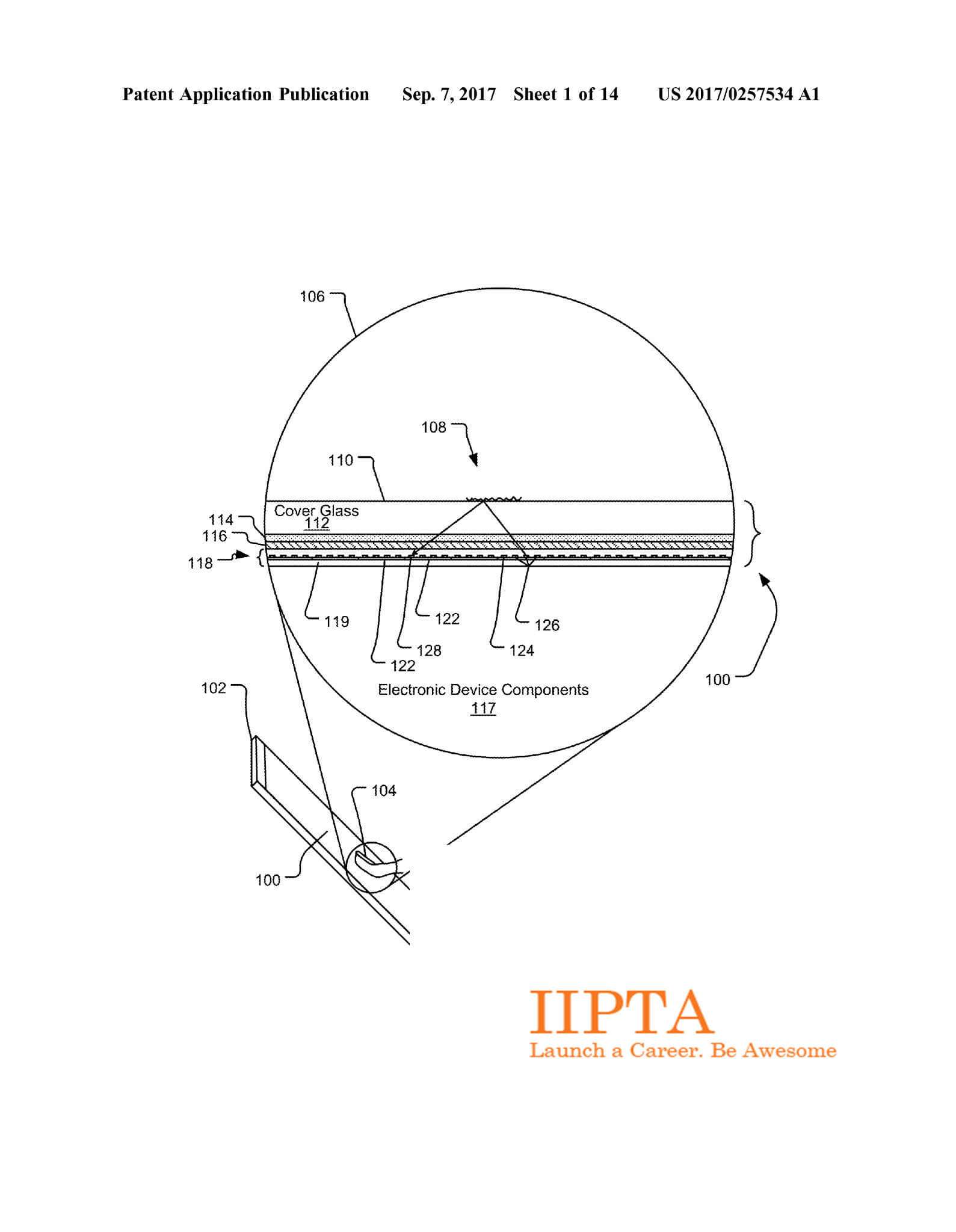Microsoft’s fingerprint technology is patented in a while. We have already come across familiar patents last year and now we are seeing the new patent filing, potentially describing similar implementation. The latest patent technology describes a system with a photosensitive layer underneath the glass detects and stores the underneath data through the glass itself.
Microsoft’s patent abstract reads:
An electronic device includes a cover glass having a display surface, a pixelated photoemitting element array, and a pixelated photodetecting element array. The pixelated photoemitting element array emits a light signal through the cover glass to the display surface. The pixelated photodetecting element array is positioned relative to the pixelated photoemitting element array and the cover glass to receive a reflected light signal. The reflected light signal includes a portion of the emitted light signal reflected by total internal reflection from a refractive boundary at the display surface. Operation of each pixel is switched between the one or more photodetecting elements and the one or more photoemitting elements by the pixel selector signal component received from the pixel selector signal bus. A sensing trigger is configured to trigger the imaging scan by the pixelated photoemitting element array and the pixelated photodetecting element array, responsive to detection of an initiating action.

Embedded fingerprint scanner research has been going on for a while with as many implementations being uncovered. While many expected the Samsung Galaxy S8 and Apple’s iPhone 8 to debut with them, neither of the two companies were able to finish their research in time, and as such fell back to regular old fingerprint authentication and facial scanning. With no mobile hardware solutions currently expected, Microsoft could embed such fingerprint scanners in its Surface Pro line of devices, further pushing the design boundaries of convertible laptops and 2 in ones.





